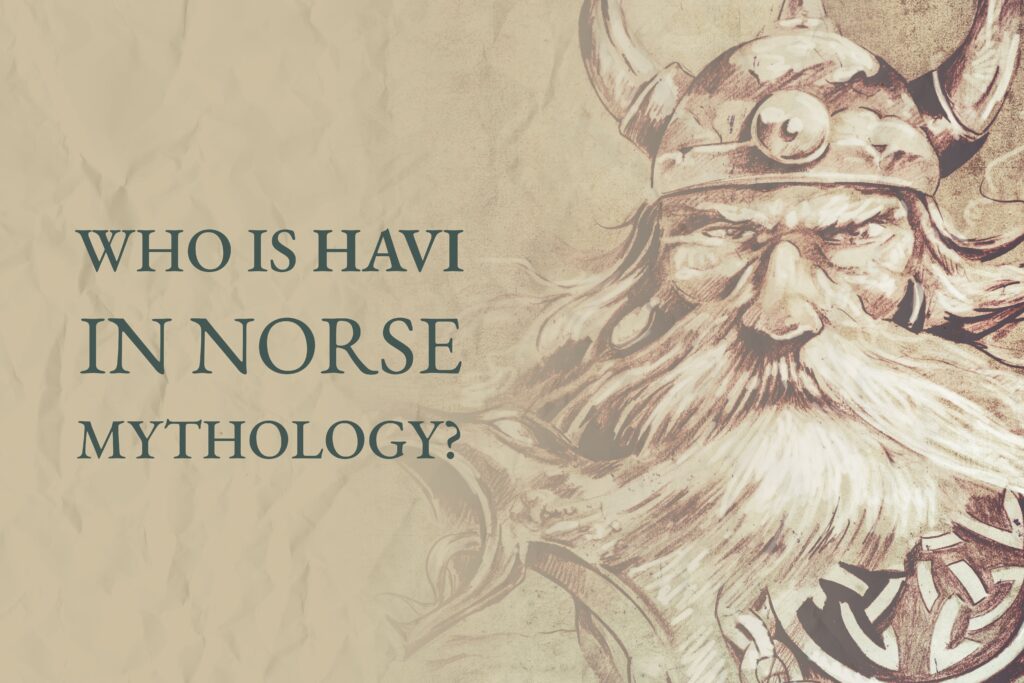Blog
Who Is Havi In Norse Mythology?
If you’re looking for information on Norse mythology, you’ve come to the right place. In this article, we’ll discuss Havi’s character, which is often considered one of the most influential figures in Norse mythology. We’ll also talk about his origins, role in the Norse pantheon, and significance overall. So whether you’re a student of Norse mythology or just curious about the Havi, meaning Norse, you’ll be able to learn a lot in this article!
What does Havi mean in Norse?
Havi is a name that originated in Norse mythology and means “High one.” In Norse mythology, Havi (alternatively Hávi) is the name of a god who is identified with wisdom and knowledge. He also has an alternate name to Odin. Havi was one of the most important gods in Norse religion and culture and played a significant role in many aspects of life.
Who is Odin in Norse mythology?
Odin is among the most important gods in Norse mythology. He is the god of war and death. Odin was also associated with runes – a type of writing used in Nordic countries.
While many aspects of Odin’s character are uncertain, it is clear that he played a major role in Norse culture and religion. He was revered as both a godfather figure and patron deity of warriors; temples were dedicated to him throughout Scandinavia. In addition to being associated with runes – an important symbol system used in Nordic paganism – Odin also had strong connections to trees and vegetation: he was said to have ruled over Æsir tree Yggdrasil.
Some also believe that Odin is similar to Zeus, the Greek god of thunder and ruler of Mount Olympus. Others think that he may have been connected to various other cultures’ gods, such as Thor or Apollo (a deity known for his healing powers). No matter your opinion of this powerful deity, there’s no denying that he has an interesting history!
Why was Odin called Havi?
The name Odin has a few different origins, but the one that interests us most is how it was derived from the Old Norse word Havi. Havi comes from the Proto-Germanic word Har, which means one-eyed. This obviously references Odin’s status as the god of wisdom and insight, usually depicted with one eye (the other he gave in exchange for knowledge), a beard, and two ravens. Combined with this exciting history, it makes for an intriguing origin story!
Did Odin have a wife?
Frigg is one of the most well-known goddesses in Norse mythology. She was married to Odin, and together they had a son Baldur. Frigg also played an important role in promoting fertility and marriage. She was responsible for deciding who would be able to marry, as well as presiding over mortal marriages herself.
Along with her husband, Frigg was a powerful deity who could bring plenty of prosperity into people’s lives. She protected people from physical and spiritual harm, so she was often invoked during difficult times or when someone needed protection from evil spirits or other pests.
What is Odin’s role in the Norse Pantheon?
The Norse pantheon of gods is a large and varied group of deities that are worshiped by the Scandinavian peoples. The gods in this pantheon are often associated with specific aspects of life, such as war, fertility, and death. Many minor gods only appear in particular stories or poems.
Some of the most well-known Norse gods are Odin (the god of war), Thor (the thunder god), Frigg (the goddess of marriage and motherhood), and Loki (the trickster god). Other prominent deities include Freya (the goddess of love and beauty), Tyr (the god of justice), and Heimdall (the guardian angel). Each god has unique characteristics and powers that make them worthy worshipers.
Odin is the god of war and wisdom in the Norse pantheon. He is also known as the All-Father, ruler of Valhalla, and husband of Frigg. Odin has many roles in Norse mythology, but his primary duty is to watch over mortals and guide them through life. He is also the patron god of warriors and hunters. Some say he was the creator god, while others believe he was a force of nature who helped shape the world. Whatever his true role, Odin remains one of the most important gods in Norse mythology.
How was a Havi Norse god depicted?
Odin, also known by its name Havi, was one of the most popular and influential gods in Norse pagan religion. He was the god of wisdom, healing, victory, and war. His symbol was a spear (often with an eagle perched on top), and he often wore a wide-brimmed hat and a cloak. Odin often helped people find their way through difficult times by granting them knowledge or guidance. Odin’s most famous myth is the saga of Ragnarök, in which he leads the battle against Jörmungandr, the giant serpent that threatens to destroy all life on Earth.
Do Pagans believe in Odin?
One of the more popular pagan religions is Norse paganism, which was widely practiced by people in the current territories of Sweden, Norway, Denmark, Iceland, and other parts of Europe. The Norse pagan religion is polytheistic and believes in many gods and goddesses. Some of these gods include Odin, Thor, and Frigg. There is little agreement on what exactly Odin is supposed to represent for Norse Pagans. Some believe he is the supreme god of all, while others say he is a powerful figure who guides and protects his followers. In either case, there is no doubt that many pagans regard him as a significant deity.
Ultimately, Odin is now among the most well-known and popular gods in Norse paganism. He is the god of war, wisdom, and death and was often considered to be the ruler of Asgard (the home of the gods). Many Pagans believe Odin has significant connections to shamanism and spirituality and can help them connect with their spiritual power.

